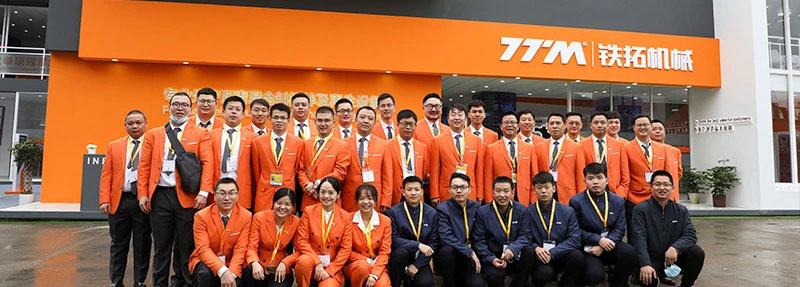Facing the Same Old Productivity Bottlenecks?
You’ve secured a fat municipal contract, leased the newest asphalt mixing plant equipment, and still find trucks queuing up every dawn. Frustrating, right? Believe me, you’re not alone. Plenty of engineers watch their beautiful pavers idle because something, somewhere, refuses to keep pace.
Is the Hardware Really the Hero—or the Hidden Villain?
Let’s get something straight: owning premium asphalt mixing plant equipment is only half the battle. The other half lives in calibration, recipe logic, and—brace yourself—operator habits. A plant can churn 160 tons an hour on paper, but if your moisture sensor is off by 0.5 %, every tonne quietly carries hidden water weight. That single glitch will force you to burn more fuel, add extra aggregates, and still finish the shift under target. Wanna guess how many contractors blame the “slow machine” when the true culprit is a 30-second sensor drift? Yup, too many.
Calibration: The 15-Minute Ritual That Saves Gallons of Fuel
Quick tip: before the first truck rolls in, run a dead-weight calibration on every scale. It sounds nerdy, but this tiny ceremony can cut binder overrun by 2 %. On a 200-ton day, that’s roughly one 20-ton tanker of bitumen you don’t have to reorder. Not to mention the dramatic drop in VOC headaches for the neighbors—always a sweet selling point when the next environmental audit comes knocking.
Why Your Recipes Need a Digital Health Check
Old-school spec books still quote “optimum bitumen content 5.2 %” as if stone never changes. News flash: aggregate sources migrate, and your asphalt mixing plant equipment doesn’t read last century’s PDFs. Upload your target gradation into the plant’s PLC and run a Bailey method analysis every quarter. The software will spit out a new set point that often trims 0.3 % off the binder while keeping VMA within spec. That tiny tweak? On a 100k ton project it’s a cool 300 tons of bitumen you can leave in the tank farm—cha-ching!
Transitioning from “Good Mix” to “Great ROI”
Alright, here’s where the rubber literally meets the road. Once your mix design is lean and clean, turn your gaze to trucks. A single loader making extra laps because of poor silo management can add 7 % to cycle time. Map the truck flow with simple GPS tags; you’ll spot the choke point in, like, a day. Fix it, and the same asphalt mixing plant equipment suddenly “gains” 10 tph without touching the drum.
Can Used Parts Secretly Boost Profit Margins?
Hold your gasps—refurbished drag chains, sieved and re-hardened, cost 40 % less than OEM and last 85 % as long. Do the math on a five-year depreciation and you’re looking at a six-figure delta on a large stationary plant. Just keep a couple of spares on site; downtime eats more margin than any part price ever will.
What About Emissions—Is Compliance Eating Your Lunch?
“The stack doesn’t lie; if it’s white, something’s not right.”
—Every plant foreman, ever.
Modern baghouses handle 99.9 % particulate capture, but hidden CO spikes still occur when the burner goes rich. Install a lambda meter post-combustion and tie it into the VFD on the combustion blower. Close that loop and you’ll see opacity drop below 5 % even on high-RAP mixes. Inspectors love visible numbers, and you’ll dodge the daily fines that quietly nibble profit like a shoal of piranhas.
Is Training the Missing Gear Between D-Grade and A-Grade Output?
Dump the idea that anyone who can drive a loader can run a 200-ton silo. A one-week vendor course costs maybe 4 k, but a well-trained operator can squeeze out an extra 8 % throughput. On a 150k ton job, that’s 12k tons you don’t have to subcontract to the competitor across town. Oh, and training lowers your insurance risk rating—something your CFO will high-five you for.
How Do You Track It All Without Losing Your Sanity?
Simple: tag three KPIs on the control-room wall—tonnes per hour, fuel index, and baghouse ΔP. Make them huge, colorful, and update them every shift. When the crew sees the numbers drift, they self-correct before WhatsApping the boss at 2 a.m. Sounds low-tech, but I’ve yet to meet a superintendent who regrets the paint.
Ready to Turn Your Asphalt Mixing Plant Equipment Into a Cash Cow?
Strip away the shiny brochure promises, and success always circles back to data, discipline, and daily habits. Nail calibration, tweak recipes, watch trucks, mind emissions, train people, and track KPIs. Do these six things and your asphalt mixing plant equipment won’t just stand there looking expensive—it’ll pay for itself faster than you can say “pneumatic tensioning.”

